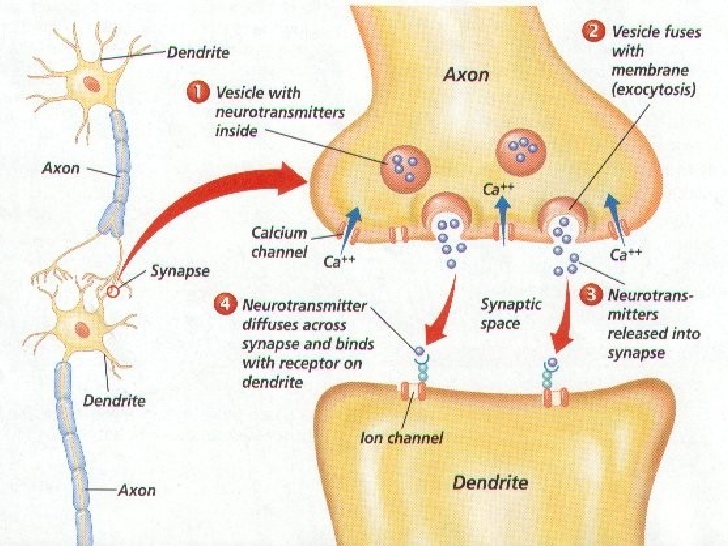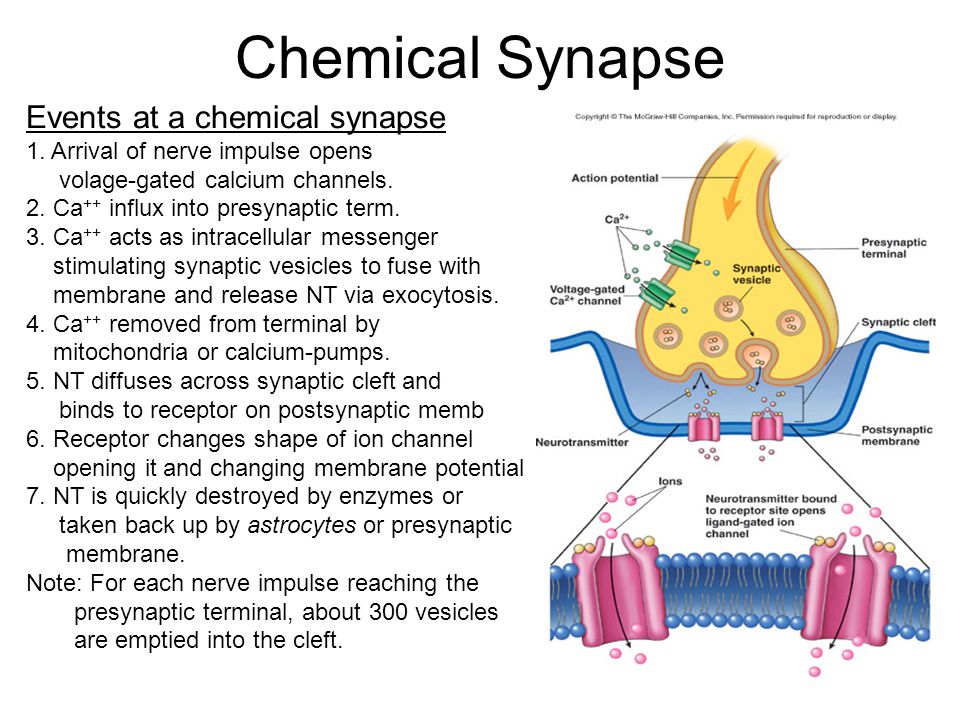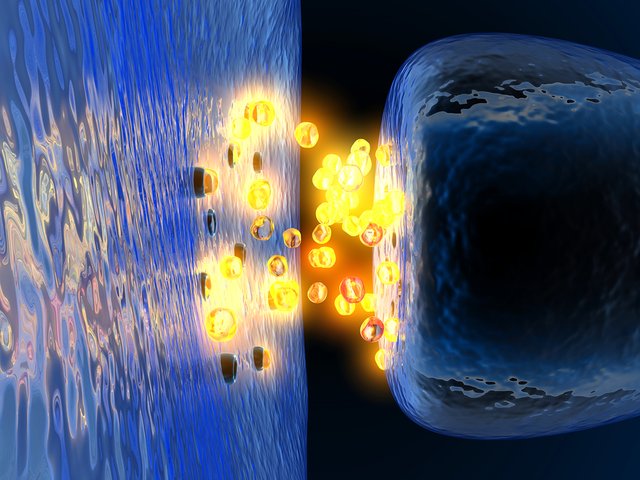The Synapses and its functions
The nervous system is one of the most important elements for our existence and survival, since it allows the management, organization and functioning of the rest of the corporal systems. This system works by sending electrochemical impulses with different information and orders for the different structures that are part of our organism.
Formerly it was believed that the nervous system was a continuous network and no separation between elements, until Ramón y Cajal, through dyes such as Golgi, allowed to identify that it is actually made up of a set of cells separated from each other: neurons . These are separated by small spaces, but they do not stop communicating with each other. The existing connection between them is what is known as synapses.

What is a synapse?
The concept of synapses, described for the first time by Ramón y Cajal and baptized by Sherrington, refers to the existence of a connection between two neurons, characterized by the presence of a small space that serves as a way for the transmission of information.
The main function of this connection is to allow the transmission of information between the different neurons. It is therefore a fundamental element in the functioning of the organism, making possible the realization and coordination of all the processes that allow to perform the different vital functions, as well as the physical and mental capacities, both basic and superior.
This connection is also very useful not only to transmit information but also to regulate it: the presence of the synaptic space causes the presynaptic neuron to recapture the neurotransmitters if an excessive amount has been released. Likewise, it is very useful in the sense that it allows the waste generated by neuronal functioning to be eliminated by each cell, preventing its wear due to the concentration of said residues.
What is the synapse for?
Seen the process that follows the transmission of information, we can say that the synaptic space has the main function of allowing communication between neurons, regulating the passage of the electrochemical impulses that govern the functioning of the organism.
In addition, thanks to it neurotransmitters can remain for a while in the circuit without the need for the presynaptic neuron to be activated, so that although they are not initially captured by the postsynaptic neuron, they could later be used.
In an opposite sense, it also allows surplus neurotransmitter to be recaptured by the presynaptic neuron, or degraded by different enzymes that can be emitted by the membrane of neurons, such as MAO.
Finally, the synaptic space facilitates the possibility of removing from the system the residues generated by nerve activity, which could cause the poisoning of neurons and their death.
Main components
The synapse between two neurons, the connection and link between them that allows information to be transmitted, is not an isolated element, but is composed of three main components among which we find part of both neurons in interrelation: presynaptic neuron, synaptic space and postsynaptic neuron.
1. Presynaptic neuron
This part refers to the neuron that sends the information to another. This action is usually carried out through the emission of neurotransmitters by the synaptic vesicles of the terminal buttons of the end of the axon, which in turn will be received by the membrane of the postsynaptic neuron.

2. Synaptic space / Synaptic cleft
The synaptic space or synaptic cleft is the small space that exists between the end of one neuron and the beginning of another. It is an extracellular space between 20 and 40 nanometers and filled with synaptic fluid that is part of the neuronal synapse, together with pre and postsynaptic neurons. In this way, it is in this space or synaptic cleft where the transmission of information from one neuron to another takes place, with the neuron that releases the information called presynaptic, while the one that receives it is called the postsynaptic neuron.
There are different types of synapses: it is possible that the synaptic space connects the axons of two neurons between them, or directly the axon of one and the soma of another. However, the type of synapse in which the axon of one neuron and the dendrites of another are communicated, called the axodendritic synapse, is the most common. Also, it is possible to find electrical and chemical synapses, the latter being much more frequent and of which I will speak in this article.

3. Postsynaptic neuron
It is the receptor part in the relationship between neurons. More than the neuron itself, reference would be made to the part of it that receives the information from the presynaptic neuron. It is usually the dendrites, although depending on the type of connection can also be the soma or the axon.

Types of synapses
There is not only one type of synapse, but different classifications and typologies can be found depending on different parameters, such as the place where they generate the connection with another neuron or the type of elements that circulate between them. Thus, we can find among others the following types.
Types according to what is transmitted
According to the type of element that is transmitted between neurons, we can find the following ones. Despite its distinction, it must be borne in mind that it is common for the same neuron to have a chemical and electrical connection at the same time, as well as the fact that the information that runs through the system is generally bioelectric (ie , although chemical elements are transmitted between neurons, what these generate are alterations of an electrical type).
Chemical synapses
It is the type of major synapse in our body. In these synapses the information is transmitted chemically, through the sending by the presynaptic neuron of different neurotransmitters that the postsynaptic neuron captures through different receptors, whose action generates an alteration in the form of excitatory or inhibitory postsynaptic potential that can end or not with the generation of an action potential by the postsynaptic neuron. They are versatile synapses, since some neurons can inhibit the action of others depending on what is activated. There is no physical contact between both neurons.

Electric synapses
In this type of synapse, the information is transmitted directly at the electrical level as the ions directly flow between the pre- and postsynaptic component. They do not have versatility, since their performance does not allow one neuron to inhibit the action of another. In this type of synapse there is actually a contact between pre and postsynaptic neuron, through the gap junctions or channels formed by proteins.
They are typical of the optic nerve and its connection with cones and rods in the eye. Also of invertebrate animals.

Types according to the effect
The interaction between neurons can have mainly two effects, which correspond to the following types of synapses.
Inhibitory and excitatory synapses
- Inhibitory synapses: if the message blocks or decreases postsynaptic activity (PPSI)
- Exit Synapse: if the message stimulates the postsynaptic neuron (PPSE)
Components of the Synapse
Whether a synapse is excitatory or inhibitory depends on the type or types of ions that are channeled into the postsynaptic flows, which in turn is a function of the type of receptors and neurotransmitters involved in the synapse
exciting transmission: one that increases the possibility of producing an action potential
inhibitory transmission: one that reduces the possibility of producing an action potential
In simpler terms it would mean that there are synaptic impulses between neurons destined to increase the probability of an electric shock being produced by the neuron's Axon, while the inhibitory ones do the opposite, say that they modulate the potential of the membrane as a whole.
- With the arrival of the action potential to the nervous terminal of the presynaptic neuron, voltage regulated channels for calcium are opened and the calcium ion entry to the synaptic buttons occurs.
Calcium stimulates synaptic vesicles and by exocytosis library neurotransmitters to the synaptic space.
Neurotransmitters diffuse through the synaptic space and combine with the specific receptors located in the dendrites or the soma (it can also be in the axon) of the postsynaptic neuron. The receptors are chemically activated protein channels.
When a neurotransmitter binds to the receptor, the channel opens and allows the passage of specific ions through the membrane.
The entrance of these ions modifies the electrical potential of the postsynaptic membrane, causing depolarization and the initiation of an action potential.
Then repolarization occurs, the neurotransmitters are eliminated from the synaptic space by means of enzymes and are recapped by the presynaptic neuron.
Without a neurotransmitter, the chemically activated channels are closed.
Depending on the place of connection
Depending on the place where they connect with each other, we can find the following types of synapses.
Axodendritic synapses
The most frequent and prototypical type of connection. The synaptic connection occurs between the axon of the presynaptic neuron and the dendrites of the postsynaptic neuron. Generally it has excitatory effects.
Axosomatic synapses
In this type of synapse, the axon of the presynaptic neuron is connected to the soma or post-synaptic nucleus. Generally it has inhibitory effects in the second.
Axo-axonal synapses
This type of connection usually occurs in such a way that modulating effects are exerted when a neuron releases certain amounts of neurotransmitter to another. There is a connection between the axon of the presynaptic neuron and the postsynaptic neuron, altering the possibility that it releases certain quantities of neurotransmitters to a third with which it is connected by another route.

For more information visit this links:
https://www.psicoactiva.com/blog/la-sinapsis-neuronal-tipos-sinapsis/
http://histologiaub.blogspot.com/p/sinapsis.html
https://faculty.washington.edu/chudler/synapse.html
http://slideplayer.com/slide/10544910/
Damn. This is a thorough post on Synapses and its Methods. Fantastic post, love the information. I am a psychonaut, so psychology is pretty baller in my world. I really appreciate the depth you put into this post.
Keep Steeming you Hooligan!
Thanks for that comment, @varignon, I'm glad and I'm honored that you really like, a greeting from Venezuela
US here! Ohio. Keep it up bud, I'll be following you around from here out!
Thanks friend I will follow you too, thanks again for following me.